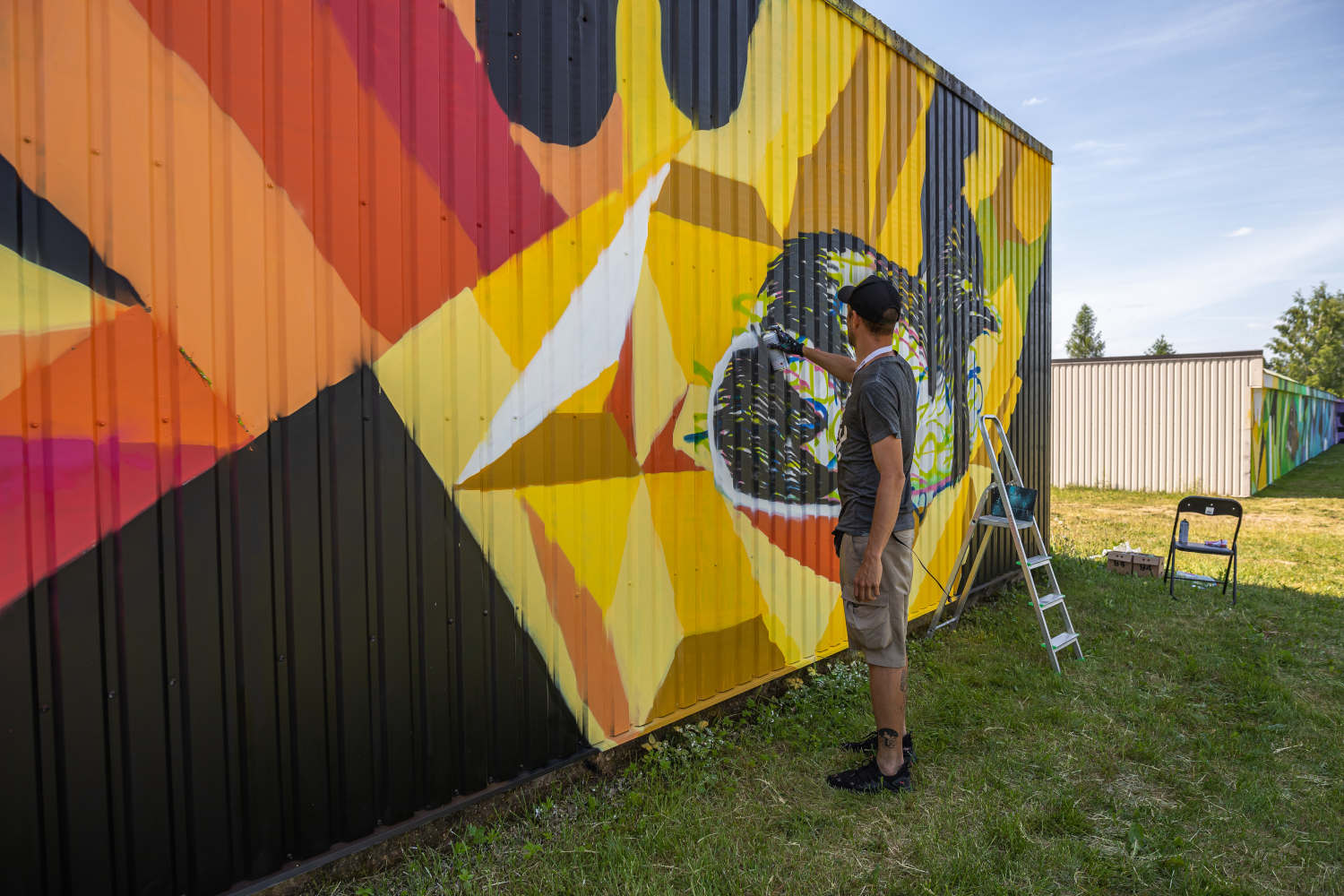- About MTN
Would you like to stay up to date on the latest MTN world news? Products, graffiti, murals, festivals, art and much more.
Return From Penelles to Viljandi. Public Art in Rural Environments Gains Territory
Muralism, a unique and powerful tool for expressing the experience of public art, fosters a commitment from inhabitants to their surroundings and generates social reconstruction of public spaces.
Activities of this nature abound, both in impressive cities and in small towns, where residents and visitors alike can easily delight in these mural interventions on the streets and in various environments of the main localities on a regular basis.
Recently, the presence of muralism in rural towns and communities throughout the territory has been increasingly observed, achieving notable integration with the landscape. Numerous festivals, events, and artistic gatherings revolving around public art and muralism take place in rural environments.

As an example from this spring, the 8th edition of the Gargar Festival de Murals i d'Art Rural took place in the Catalan town of Penelles, located in the province of Lleida, Spain. This region is known as the "granary of Catalonia," an agricultural area where, amidst fields of cereals and fruit trees, this small population has earned the reputation of being the "town of murals" over the course of nearly a decade.
Once a year, during its patron saint festivities, thousands of visitors come to witness the completion of mural pieces created by an international cast of artists. This edition featured Ana Repullo, Dirty, Dante Arcade, Edgar Massegú, Gijs Vahee, Hélène Planquelle, Ian_Lleida, Kamma Marlo, Mura, Podre, Rame 13, Stillo Noir, Sucri & Furyo, Uri Kthr, Valentí Gubianas, and Wedo Goás, among others.
These artists' works join over 100 murals scattered throughout the town as a result of previous editions of the festival. Since its inception in 2016, with the sponsorship of Montana Colors, the festival has become a must-visit during the artistic spring season on the peninsula, earning prestigious awards in the cultural realm, such as the Premi Tendències 2017 for Emerging Cultural Industry and the Premi Impulsa 2020 awarded by the Fundació Catalunya Cultura.

However, the territory in which public art flourishes, is cultivated, and is harvested in rural environments is inexhaustible, and there are increasing initiatives in this regard. One such example is the RUA Street Art Festival, which since 2018 has aimed to bring color and creativity to small Estonian towns through urban art and professional muralism.
The 6th edition of this nomadic festival, held in early June and also sponsored by Montana Colors, took place in seven small localities within the municipality of Viljandi, Estonia. It showcased the talent of artists such as Luogo Comune from Italy, Peter Skensved from Denmark, Myforestbridge from Ukraine, Uneg from Mexico, Karolis Dezute and Pidžin from Lithuania, Annabelle Tatto and Maxime Ivanez from France, and Maikki Rantala from Finland.
Daily encounters with urban art create social spaces, offering new perspectives and ways of perceiving the world. They foster a creative feedback loop between the artist, the individual spectator, and society.

The remarkable aspect of public art, and consequently muralism, is that it becomes a universal equalizer: accessible to everyone at no cost, without the need to purchase a drink or a museum ticket, and enjoyable by people of all races, ages, social classes, and economic statuses.
It is precisely in this accessibility that the fundamental value of muralism and public art lies as a powerful tool for transformation and social inclusion. From our point of view, this circumstance has been evident during the development of these festivals, which may be geographically distant from each other, but share the same intention and spirit.

Photos by Karen Akopjan and Binomic
ShareJune 22, 2023
